The Wiślica branch of the museum is an archaeological and historical one. It was created on 20 May 1966 at the initiative of Zespół Badań nad Polskim Średniowieczem (Polish Middle Ages Research Team). The Team opened the new facility primarily with a view to seeking, sharing and popularising the historical objects acquired during the archaeological research conducted between 1949 and 1964. It was particularly important to secure and share the architectural relics of the St. Nicolas Church, along with the hypothetical baptistery, and the historical objects discovered under the Collegiate Church.
The Museum was initially situated in the basement of the then Culture Centre, suitably adapted for exhibition purposes, and then in the Archaeological Pavilion built in 1964, primarily to protect the relics of the St. Nicolas Church. In 1981 it was proposed that the Museum be moved to Kamienica Bractwa Różańcowego (House of the Brotherhood of the Rosary), a 17th century building situated directly on the Wiślica Main Market. This opened new exhibition prospects, as well as the possibility of having a studio, an office and museum storage spaces.
Unfortunately, this proposal for moving the Museum to a new location came to nothing. The last opportunity for development appeared in 1986, when the initiative of renovating the Archaeological Pavilion was undertaken. Works were carried out in winter, which only deteriorated the poor technical condition of the building. Later, in 1999, in connection with the educational reform introducing three-year middle schools in Poland and with the need to create a new educational facility, a decision was made to close down both the Museum and the Culture Centre so that the building could be adapted to the new purpose. From 1999, the Museum functioned as a section of the local authorities, which deprived the institution of sufficient continuous financial, substantive and organisational support. In 2003, the Museum signed a lease for a room in the House of Długosz, which had been the subject of renovation and construction works in 2000 and 2003 in connection with uncovering the Gothic wall paintings.
In 2010, when the “district museum section” was transformed into a culture institution of the local government under modern articles of association, the facility gained all the legal grounds to “restart” operations. Since the middle of 2016, it has formed a branch of the National Museum in Kielce.
The Archaeological Pavilion: Built in Wiślica, the Archaeological Pavilion includes the relics of the early Romanesque St. Martin Church along with the adjacent tomb chapel dating back to the 11th century. On the north wall of the church is a hypothetical baptistery, potentially dating from the year 880!
The Vaults: The archaeological reserve under the Basilica hides the remains of two Romanesque churches. The first one, dating back to the 12th century, has an engraved crypt floor, unique on a global scale, known as the “Floor of Orants.” It is considered one of the most important and spectacular examples of Romanesque art.
The other church dates back to the 13th century, and all that remains are fragments of the walls and a floor made of enamelled ceramic tiles with rich rosette ornaments. The original cross-section of the church cemetery is another curiosity.
House of Długosz: This Gothic house known as the House of Długosz was founded by Jan Długosz in 1460. The building was erected for 12 canons and 12 curates serving in the then Collegiate Church. Now a presbytery, it continues to fulfil its function today. The following rooms are open for visitors: the cellars with their cafe and sacral art exhibition, the entrance hall with its oak coffered ceiling and preserved Gothic portals, as well as the museum exhibition hall. This is where visitors can see original 15th century polychromes and a 15th century ornamented larch wood beam ceiling.
Basilica: This two-aisle church founded by Casimir the Great is the largest historical building in Wiślica. One of the expiation churches created by the king to atone for the murder of canon Marcin Baryczka, it is among the greatest examples of Gothic architecture in Poland. Its interior offers incredibly valuable objects of sacral art, the most prominent being the relief of St. Mary, born of the Romanesque and Gothic styles in the second half of the 13th century. In 1347, the church witnessed one of the most crucial moments in the history of medieval Poland: the implementation of the Wiślica Statutes, i.e. the first codification of the law, effected at the initiative of Casimir the Great. Other highlights include the Russian Revival frescos from 1398 founded by Władysław Jagiełło and the authentic heraldry on the keystones of the church vaults, representing the notion of the Crown of the Kingdom of Poland from the 14th century. Since 2005, the church has had the status of Basilica Minor.
Memorial Plaque: Situated on the northern wall of the Basilica, the 1464 Memorial Plaque founded by Jan Długosz, features the Kraków bishop Bodzanty and Casimir the Great entrusting a model of the Wiślica church to the care of St. Mary with Child.
Bell tower: Adjacent to the Basilica, the bell tower was founded in 1460 by Jan Długosz. Its first two floors are made of stone, and the remaining ones of brick. Immediately under the roof is a frieze with a number of coats of arms. Damaged during World War II, it has since been renovated.
Castle: The early medieval castle is situated about 500 m to the east of the current Wiślica market square. The still visible outlines of the fortifications date from the end of the 12th or beginning of the 13th century, but the oldest part of the buildings are from the 10th century. The castle consists of 27 semi-pit houses, 5 utility buildings, a well and a water cistern. Most of this had military functions, which involved protecting the urban settlement and travel across the marshes of the Nida River.
| Day of the week | Opening hours | ||
|---|---|---|---|
| Tuesday | 09:00 - 17:00 | ||
| Wednesday | 09:00 - 17:00 | ||
| Thursday | 09:00 - 17:00 | ||
| Friday | 09:00 - 17:00 | ||
| Saturday | 11:00 - 19:00 | ||
| Sunday | 11:00 - 19:00 | ||
| Holidays | Opening hours |
|---|---|
| 2023.05.01 (Monday) | 11:00 - 19:00 |
| 2023.05.03 (Wednesday) | 09:00 - 17:00 |
| 2023.05.28 (Sunday) | 11:00 - 19:00 |
| 2023.08.15 (Tuesday) | 09:00 - 17:00 |
| 2023.11.01 (Wednesday) | 09:00 - 17:00 |
| 2025.04.20 (Sunday) | x |
| 2025.04.21 (Monday) | x |
| 2025.05.01 (Thursday) | x |
| 2025.05.03 (Saturday) | x |
| 2025.06.19 (Thursday) | x |
| 2025.08.15 (Friday) | x |
| 2025.11.01 (Saturday) | x |
| 2025.11.11 (Tuesday) | x |
| 2025.12.25 (Thursday) | x |
| 2025.12.26 (Friday) | x |
| Tickets | ||
|---|---|---|
| normal | 20.00 PLN | |
| reduced | 12.00 PLN | |
| group | 10.00 PLN | |
| when? | name | where? | about what? | for free | for children | |
|---|---|---|---|---|---|---|
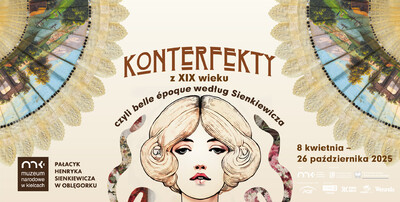 | 2025.04.08-2025.10.26 | "Konterfekty z XIX wieku, czyli belle époque według Sienkiewicza Temporary exhibition | The Museum of Henryk Sienkiewicz in Oblęgorek ul. Aleja Lipowa 24 26-067 Strawczyn Świętokrzyskie | literature, outfits, painting, utility items | ||
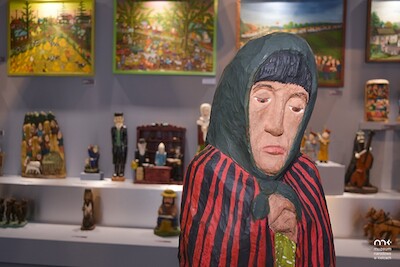 | FROM THE SACRED TO THE PROFANE: Sculpture and painting in folk art Permanent exhibition | The Museum for Intercultural Dialogue ul. Rynek 3 25-303 Kielce Świętokrzyskie | folk art, painting, sacrum, sculpture | |||
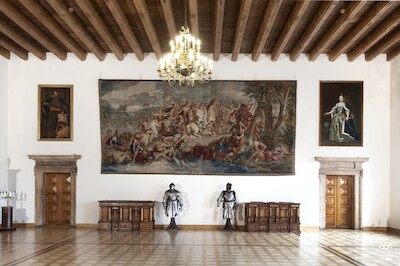 | Historical interiors - 17th and 18th c. Permanent exhibition | Former Palace of Cracow Bishop pl. Zamkowy 1 25-010 Kielce Świętokrzyskie | art, art crafts, fabrics, interiors and everyday life, weapons and militaria | |||
| History of Motorisation in Miniature Permanent exhibition | The Museum for Intercultural Dialogue ul. Rynek 3 25-303 Kielce Świętokrzyskie | automotive, models | ||||
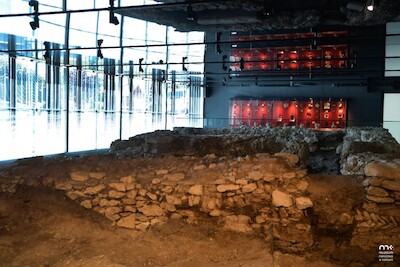 | Permanent exhibition Permanent exhibition | The Museum of Archeology in Wislica pl. Solny 35 28-160 Wiślica Świętokrzyskie | archeology, architecture, numismatic items, utility items | yes | ||
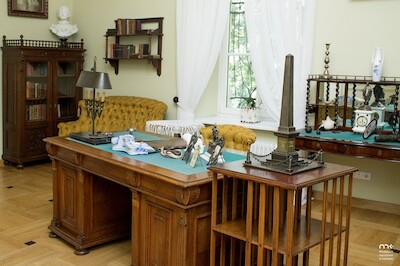 | Permanent exhibition Permanent exhibition | The Museum of Henryk Sienkiewicz in Oblęgorek ul. Aleja Lipowa 24 26-067 Strawczyn Świętokrzyskie | art crafts, artists, interiors and everyday life, literature, utility items | |||
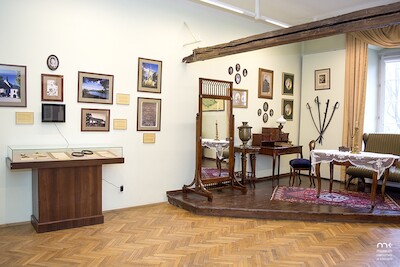 | Permanent exhibition Permanent exhibition | Muzeum Stefana Żeromskiego ul. Jana Pawła II 5 25-013 Kielce Świętokrzyskie | artists, interiors and everyday life | |||
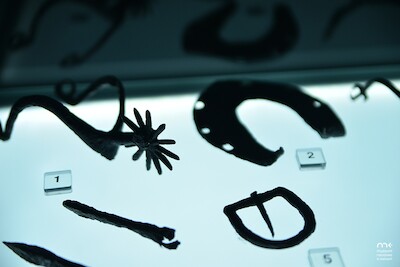 | Prehistory and early Middle Ages of Ponidzie and Wiślica Permanent exhibition | The Museum for Intercultural Dialogue ul. Rynek 3 25-303 Kielce Świętokrzyskie | archeology, collections, region, utility items, weapons and militaria | |||
 | The diversity triangle Permanent exhibition | The Museum for Intercultural Dialogue ul. Rynek 3 25-303 Kielce Świętokrzyskie | anthropology, region, religions | |||
| The Gallery of Polish Painting and Decoration Art Permanent exhibition | Former Palace of Cracow Bishop pl. Zamkowy 1 25-010 Kielce Świętokrzyskie | art crafts, painting | ||||
 | The Numismatic collection Permanent exhibition | Former Palace of Cracow Bishop pl. Zamkowy 1 25-010 Kielce Świętokrzyskie | archeology, numismatic items | |||
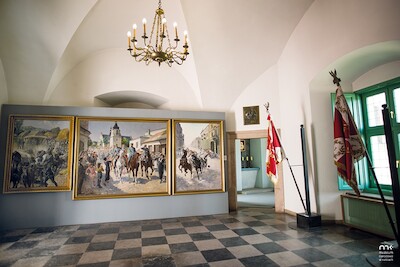 | The Sanctuary of Marshal Joseph Pilsudski Permanent exhibition | Former Palace of Cracow Bishop pl. Zamkowy 1 25-010 Kielce Świętokrzyskie | army, characters |